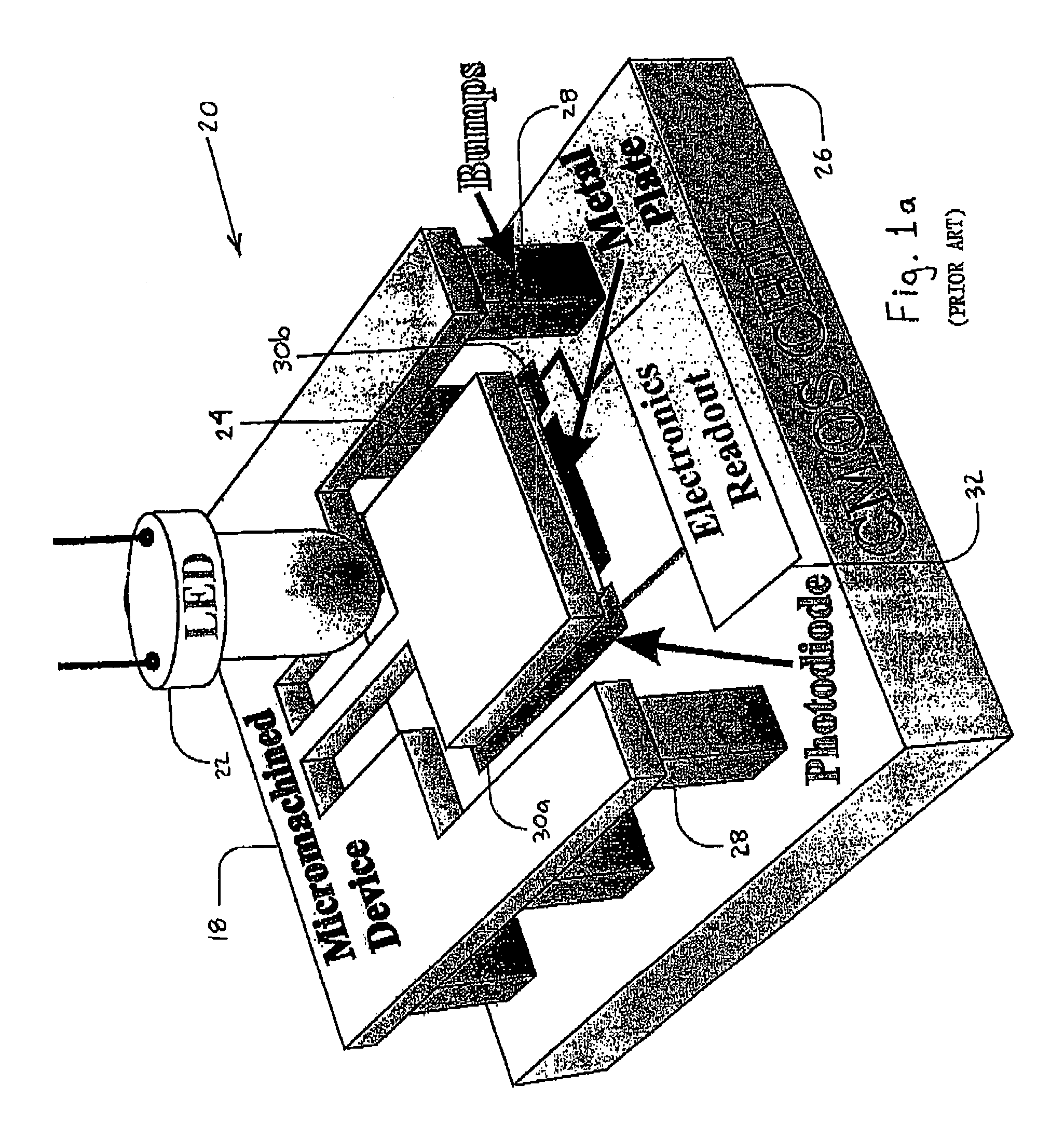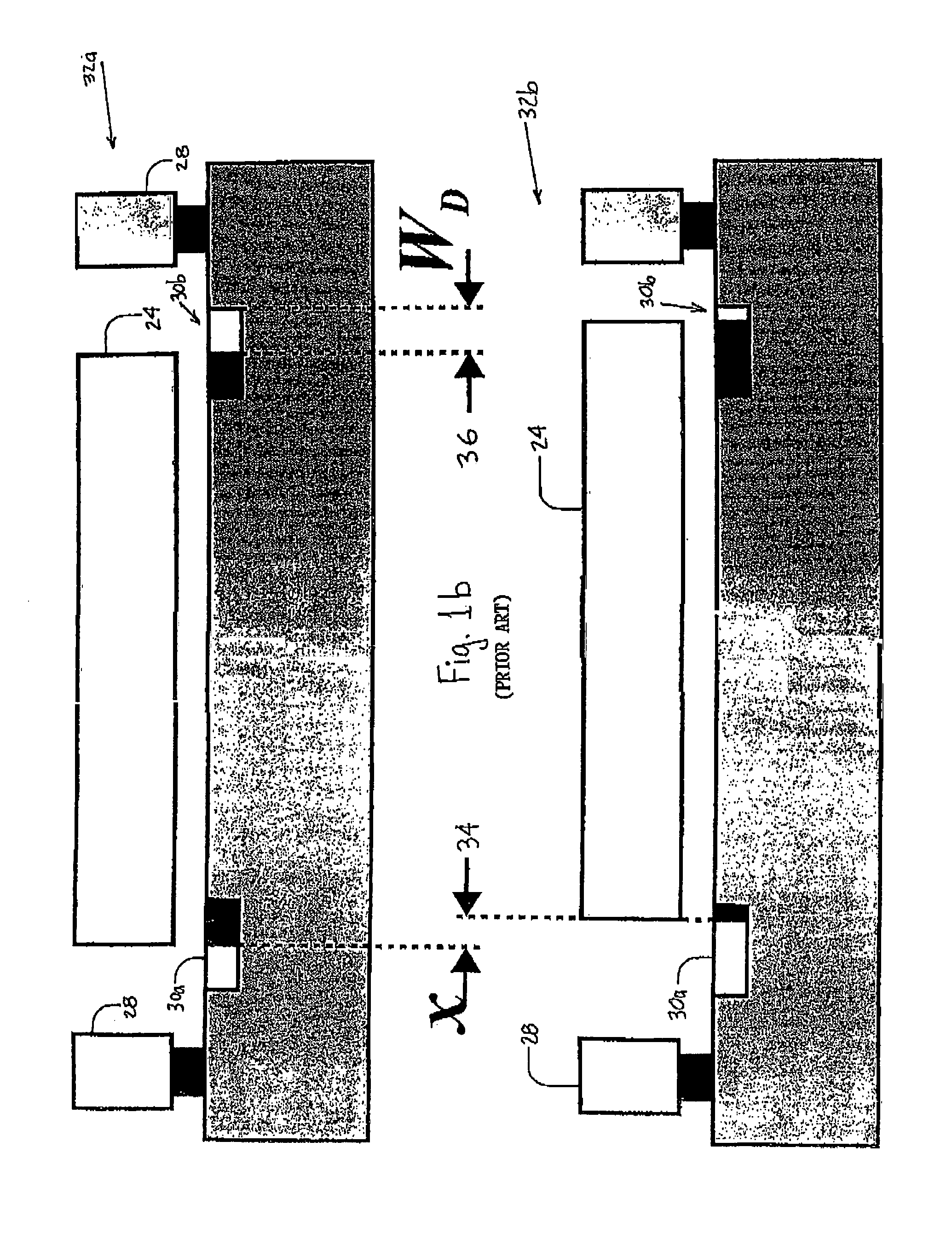Method and apparatus for micro-machined sensors using enhanced modulated integrative differential optical sensing
a technology of integrated differential optical sensing and micro-machined sensors, applied in the direction of acceleration measurement using interia forces, acceleration measurement in multiple dimensions, instruments, etc., can solve the problems of limiting the minimum detectable displacement, increasing the complexity of the mems device, and increasing the size of the micro-electronics
- Summary
- Abstract
- Description
- Claims
- Application Information
AI Technical Summary
Benefits of technology
Problems solved by technology
Method used
Image
Examples
case study
Design Case Study
[0147]In the following, a design case study of an accelerometer employing EMIDOS is discussed. The TNEA and natural frequencies are derived for the structure, and the design considerations of the accelerometer are discussed.
[0148]FIG. 7 is a schematic illustration of an accelerometer employing E-MIDOS 110, in accordance with an exemplary embodiment of the present invention. The suspending beams and the grid are assumed with rectangular cross-section, see the Fabrication Process, described hereinbelow. The total thickness of all the accelerometer mechanical structural elements, i.e. beams, proof-mass 24 and grid 44, is denoted by T. Grid 44 is centered with respect to proof-mass 24. It is noted that grid 44 does not fill entire proof-mass 24 and mass 24 is extended to fill most of the inner frame. This is done in order to increase the total mass and reduce the thermal-mechanical noise. Grid 44 is circumscribed by, and is not required to be extended over, the entire c...
PUM
 Login to View More
Login to View More Abstract
Description
Claims
Application Information
 Login to View More
Login to View More - R&D
- Intellectual Property
- Life Sciences
- Materials
- Tech Scout
- Unparalleled Data Quality
- Higher Quality Content
- 60% Fewer Hallucinations
Browse by: Latest US Patents, China's latest patents, Technical Efficacy Thesaurus, Application Domain, Technology Topic, Popular Technical Reports.
© 2025 PatSnap. All rights reserved.Legal|Privacy policy|Modern Slavery Act Transparency Statement|Sitemap|About US| Contact US: help@patsnap.com



